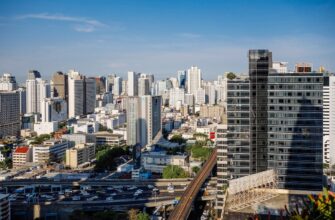The USD to IDR (United States Dollar to Indonesian Rupiah) exchange rate is a critical metric for investors, businesses, and travelers engaging with Southeast Asia’s largest economy. Understanding its historical trends, key drivers, and future projections can help stakeholders make informed decisions. This article explores the USD/IDR exchange rate history, major influencing factors, and what to expect in the coming years.nn## A Historical Overview of USD to IDR Exchange RatesnnThe Indonesian Rupiah (IDR) has experienced significant volatility against the US Dollar (USD) over the decades, shaped by global events, domestic policies, and economic shifts.nn### The 1990s: The Asian Financial Crisisn- In 1997–1998, the Asian Financial Crisis caused the IDR to plummet from ~2,400 IDR/USD to nearly 17,000 IDR/USD.n- Indonesia’s high foreign debt and weak banking sector exacerbated the currency’s collapse.n- The crisis led to IMF intervention and structural reforms to stabilize the economy.nn### The 2000s: Gradual Recoveryn- By the mid-2000s, the IDR strengthened to ~8,000–9,000 IDR/USD due to rising commodity exports and political stability.n- The 2008 Global Financial Crisis saw the IDR weaken temporarily but recover quickly as Indonesia’s domestic demand grew.nn### The 2010s: Commodity Boom and Volatilityn- Between 2011–2013, the IDR traded at 8,500–9,500 IDR/USD, supported by high coal and palm oil prices.n- From 2015–2019, the currency fluctuated between 13,000–15,000 IDR/USD amid falling commodity prices and US Federal Reserve rate hikes.nn### The 2020s: Pandemic and Global Uncertaintyn- COVID-19 pushed the USD/IDR rate to an all-time high of ~16,000 IDR/USD in 2020.n- Post-pandemic recovery and rising interest rates have kept the pair between 14,500–15,500 IDR/USD as of 2023.nn## Key Factors Influencing the USD to IDR Exchange Ratenn### 1. Economic Indicatorsn- Indonesia’s GDP growth, inflation, and trade balance directly impact the Rupiah. For example, trade deficits often weaken the IDR.nn### 2. Political Stabilityn- Elections, regulatory changes, and corruption scandals can trigger short-term volatility.nn### 3. Global Market Trendsn- The US Dollar’s strength, commodity prices (e.g., oil, coal), and geopolitical tensions influence investor sentiment.nn### 4. Central Bank Policiesn- Bank Indonesia (BI) intervenes through interest rate adjustments and foreign exchange reserves to stabilize the IDR.nn## How to Track USD to IDR Exchange Ratesnn1. **Financial News Websites**: Bloomberg, Reuters, and CNBC provide real-time updates.n2. **Currency Converter Tools**: XE.com, OANDA, and Google Finance offer historical charts.n3. **Central Bank Reports**: Bank Indonesia publishes monthly exchange rate data.n4. **Mobile Apps**: Apps like Currency Converter Plus send rate alerts.nn## USD to IDR Exchange Rate FAQnn### What Was the Highest USD/IDR Exchange Rate in History?nThe IDR hit an all-time low of ~16,000 per USD in March 2020 during the COVID-19 pandemic.nn### How Does Bank Indonesia Stabilize the Rupiah?nBI uses interest rate hikes, foreign reserve sales, and bond market interventions to support the IDR.nn### Should I Exchange USD to IDR Now?nMonitor trends and consult financial advisors. Hedging tools like forward contracts can mitigate risk for large transactions.nn### How Do Oil Prices Affect the IDR?nIndonesia imports oil, so rising prices widen the trade deficit and pressure the Rupiah.nn### Where Can I Find Real-Time USD/IDR Data?nPlatforms like TradingView, Investing.com, and BI’s website offer live charts and analysis.nn## ConclusionnThe USD to IDR exchange rate reflects Indonesia’s economic resilience and vulnerabilities. While external shocks and commodity cycles drive volatility, Bank Indonesia’s policies aim to maintain stability. By tracking trends and understanding historical patterns, businesses and individuals can better navigate currency risks in this dynamic market.








